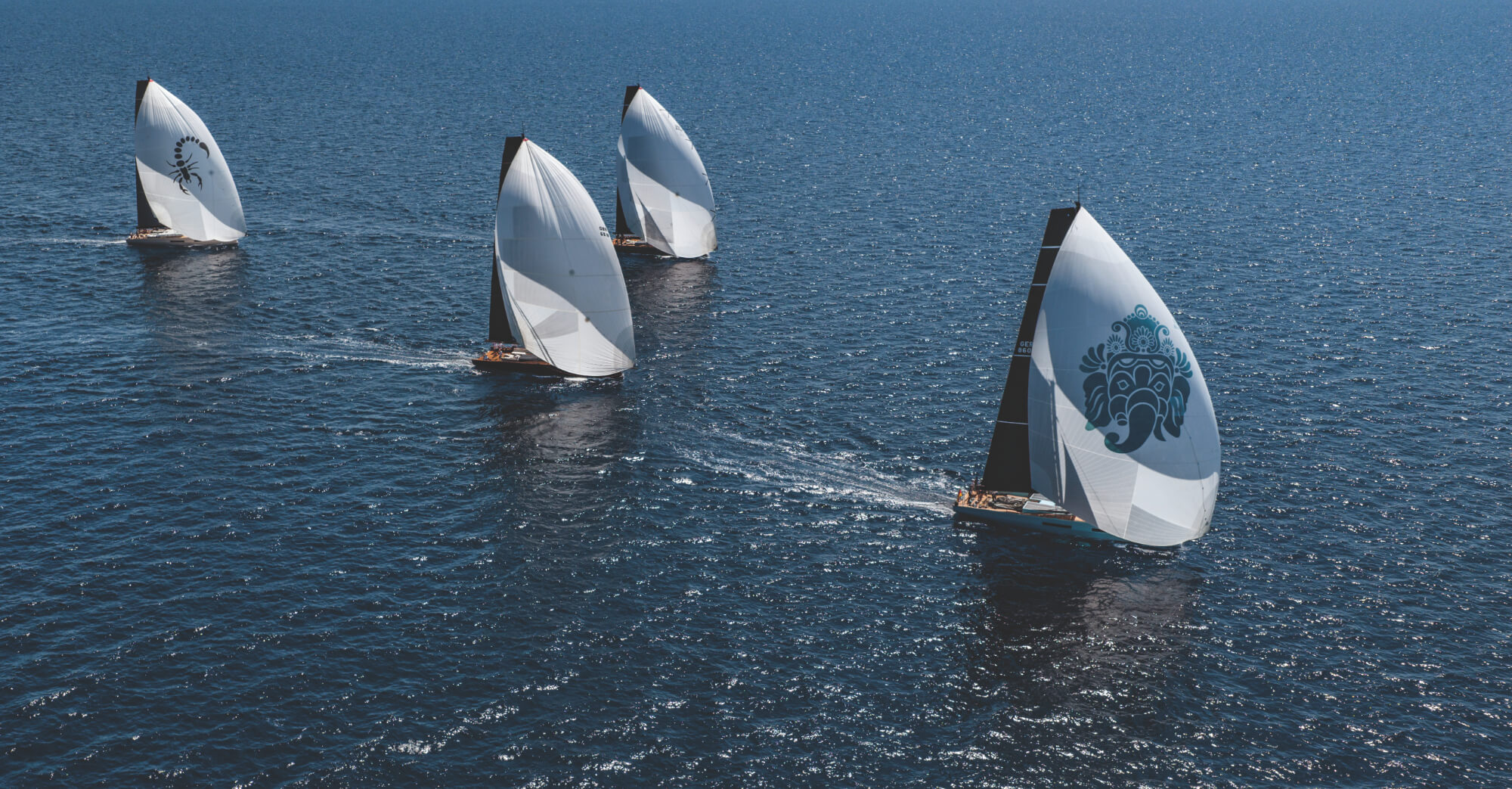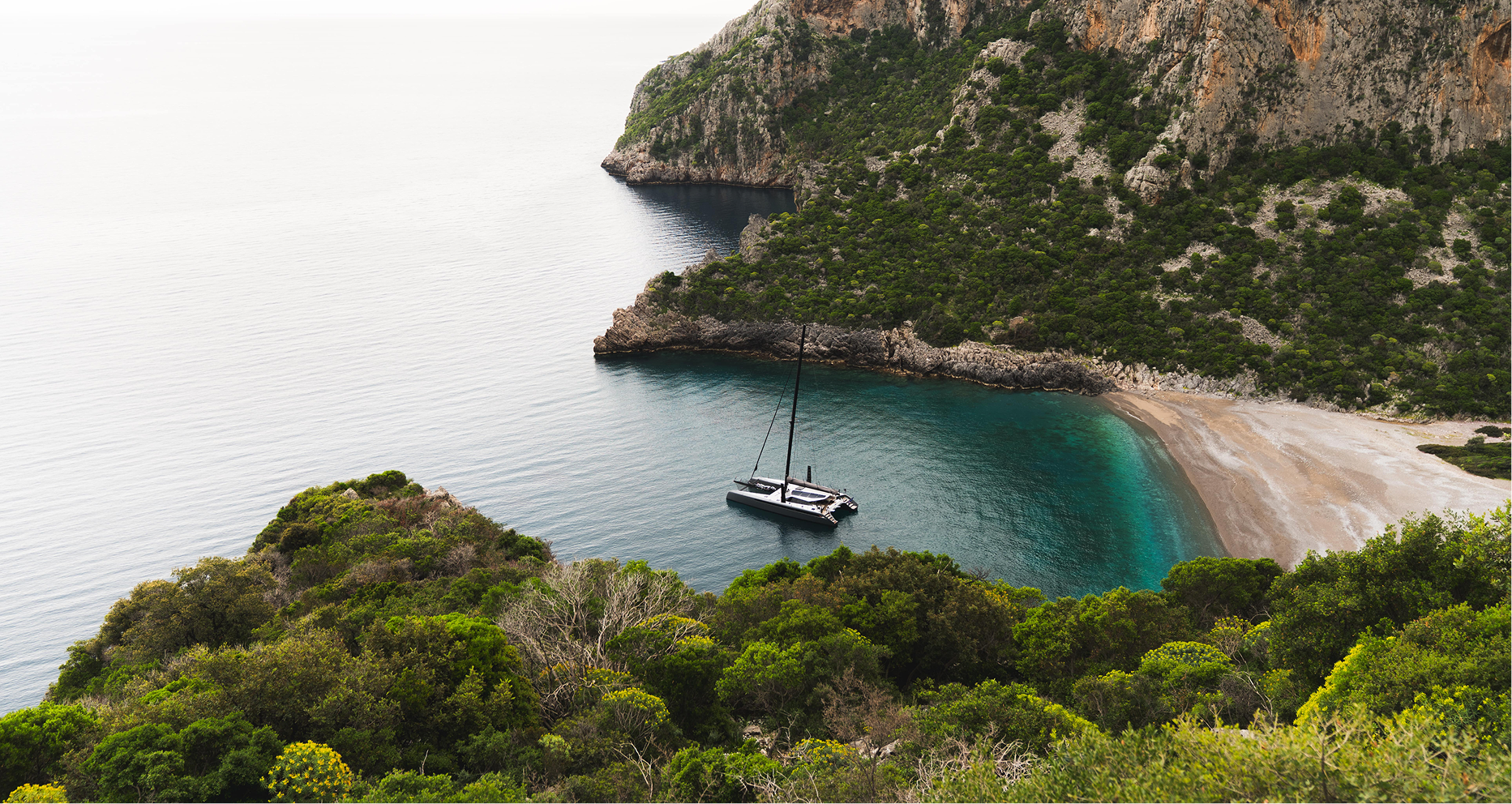The J Class yachts remain a powerful emblem of a gilded age. Their blend of elegance and excess transports us back to a time when for many money was no object, and it could buy something of true beauty.
There are nine J Class sailing at the moment, but it is worth noting that of the original 1930s group, when these magnificent vessels competed for the America’s Cup, there are but three surviving; Endeavour, Shamrock V and Velsheda. All of the J Class yachts are beautiful but, without these three, it’s likely the magnificent boats would be just a memory, preserved in photos and America’s Cup memorabilia.
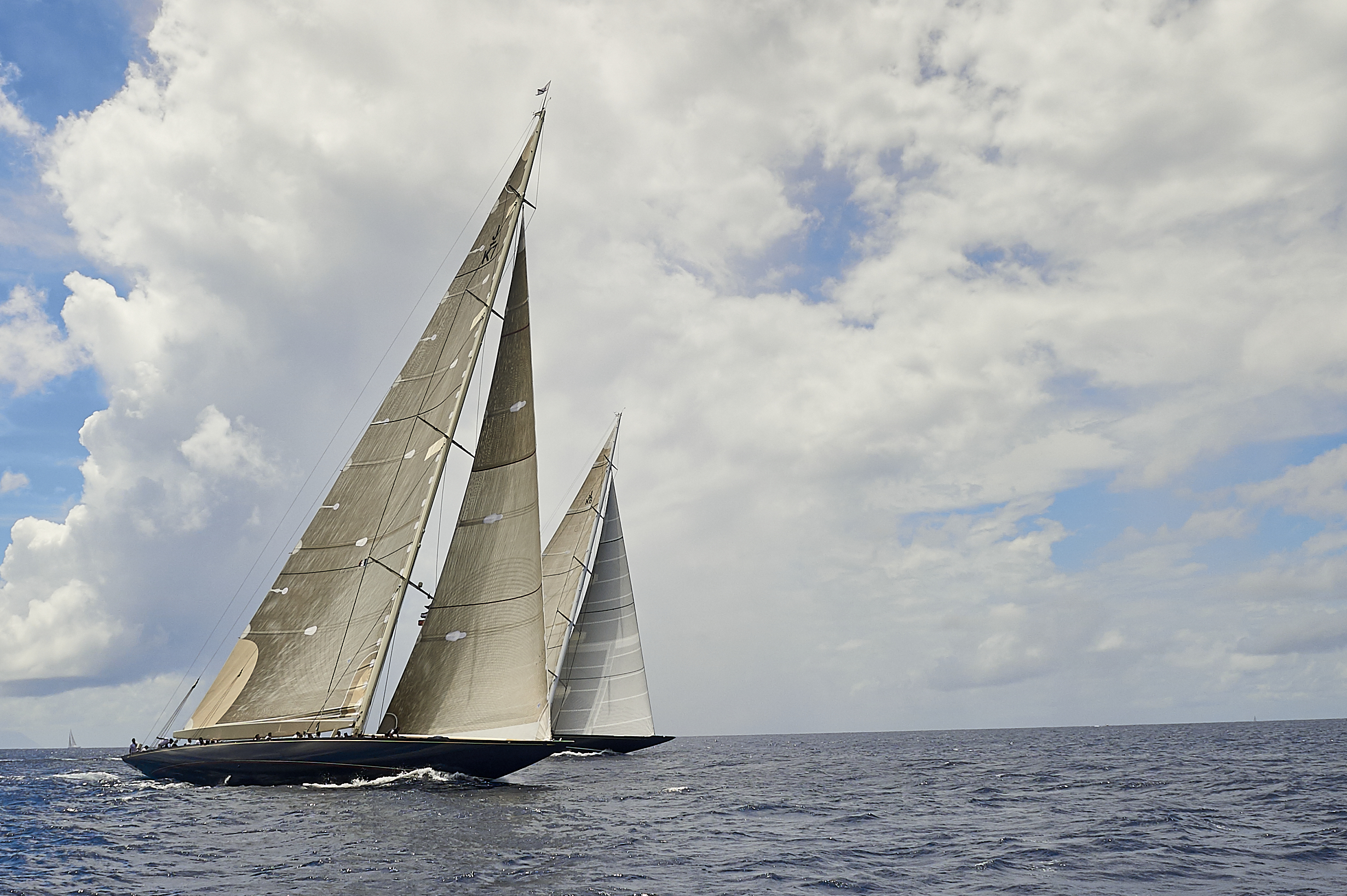
Velsheda’s story in particular is rich and fascinating – and hard to imagine as you look at her today, all glossy paintwork, pristine teak decks, varnished mahogany deckhouses and polished stainless steel fittings. But at many moments during her lifetime so far, her existence hung by a thread. She was constructed in 1933 by Charles E Nicholson, the man who designed all the British J Class yachts. William Lawrence Stephenson ordered her creation. He started his career as a humble freight clerk and, by dint of his diligence and intelligence, became director of the British arm of the Woolworths retail empire and one of the country’s richest men. He was also a keen sailor and racer, naming Velsheda after his three daughters, Velma, Sheila
and Daphne.
The J Class were the biggest yachts designed to the Universal Rule, drawn up by American designer Nat Herreshoff in 1903. Velsheda is typical of this, at 129’ long overall, built in steel and with a mast 171’ long. The power these yachts and their huge rigs generated was simply awesome, with loads that made handling quite fraught – particularly in the infancy of the class, when mast construction for boats of this size was still a learning exercise, and the loss of a rig in anything over a Force 3 breeze was all too frequent. It was only when new rules came in increasing mast scantlings that this unsettling phenomena ended.
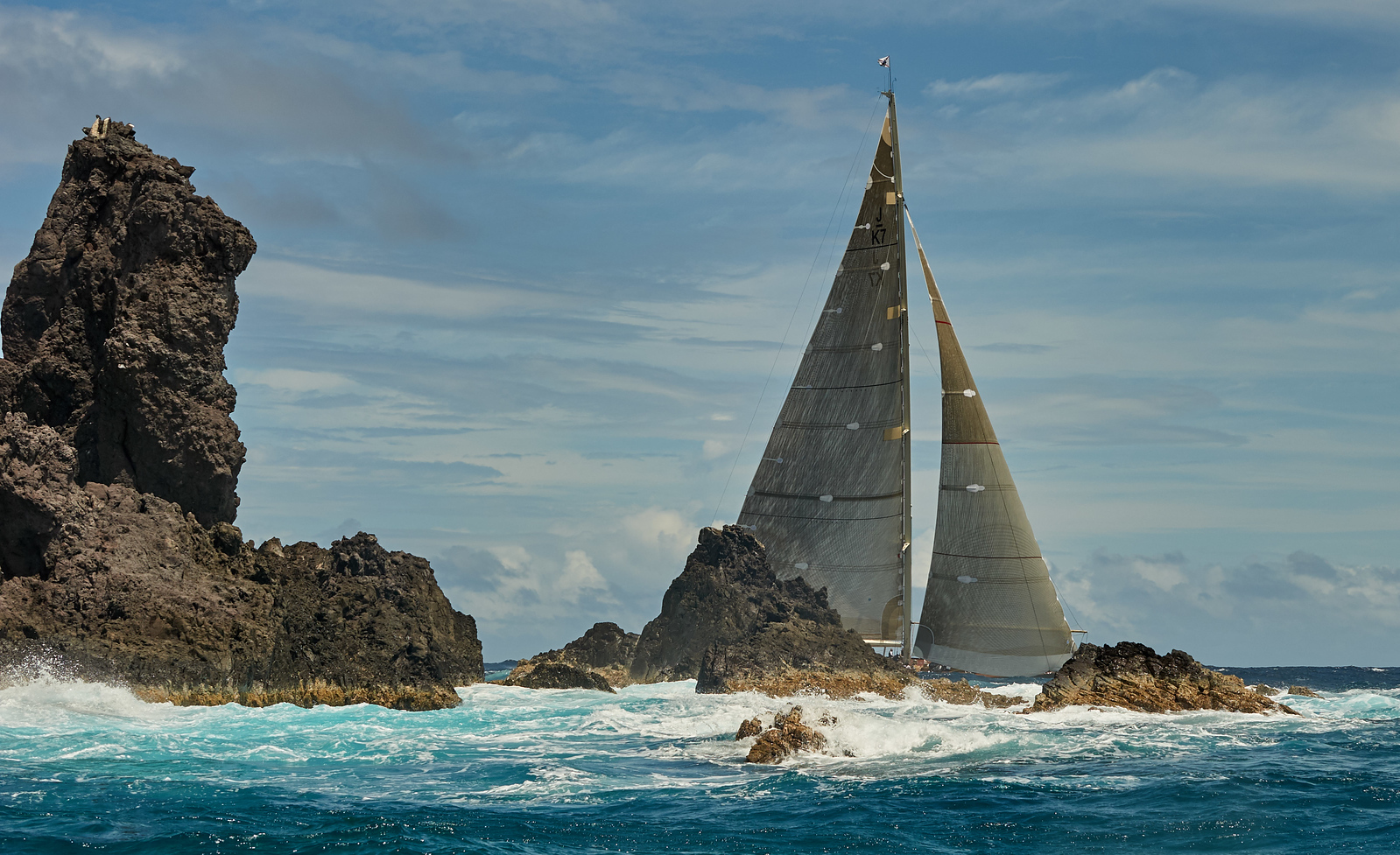
After three successful seasons, Velsheda was laid up and, with the dark clouds of World War Two on the horizon, this might have been the end of her career. She was left to gently decay on the River Hamble until the 1980s. It was her steel hull that undoubtedly saved her as this retained its structural integrity and meant that when Terry Brabant, a scrap merchant and something of a maverick, bought the bare hull in the early 1980s, he at least had a solid foundation to work with. His vision in restoring this awe-inspiring yacht on a shoestring budget speaks of genuine chutzpah.
She was relaunched in 1984 and sent out on the charter circuit, mostly in the UK but also in the Mediterranean. It sounds like the old beauty led an itinerant life and had many adventures during this period, many forgotten. There is, however, photographic evidence of Velsheda hard and fast on the beach off the port of Douglas on the Isle of Man. It appears she broke her moorings during a gale and ended up ashore. Her crew casually slid down the side deck and walked into town at low tide to request help. It speaks volumes about the strength of her hull that she was hauled off again at high tide with minimal damage.
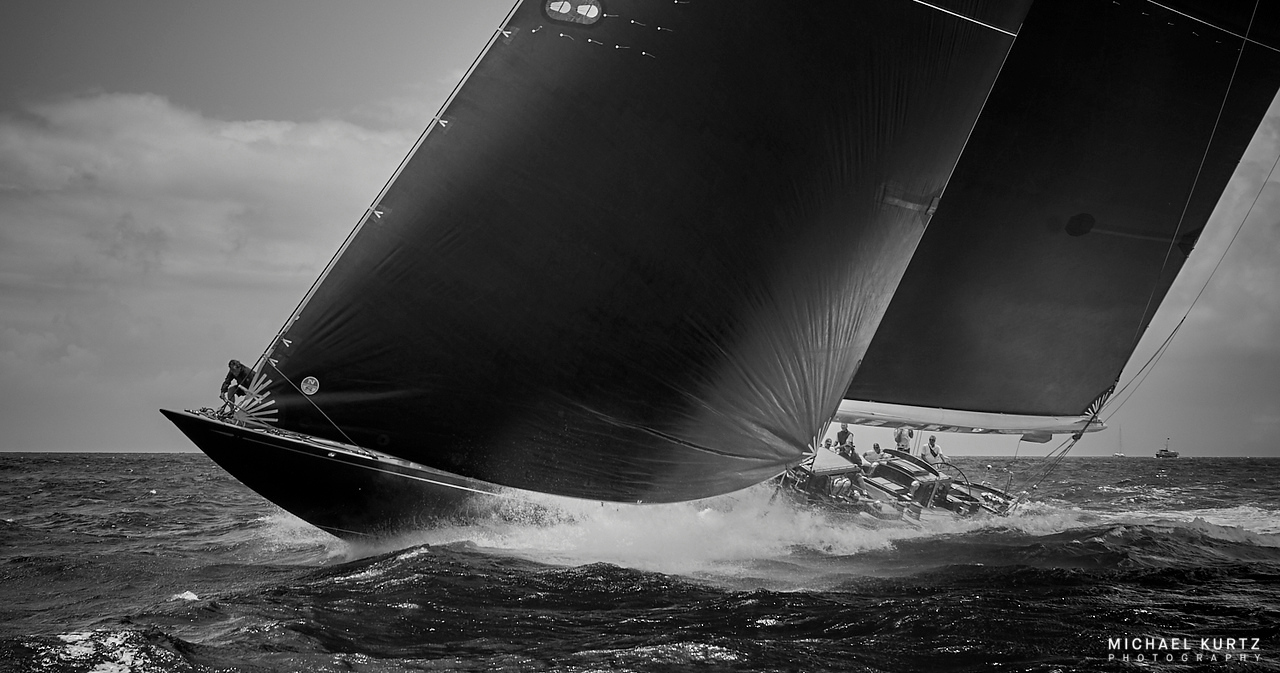
It was clear that this magnificent classic – a rich man’s toy – was being run on a very tight budget and it was perhaps little surprise that by 1995 she was once again laid up, the search for a new owner begun. By now, the J Class yachts Shamrock V and Endeavour were back on the scene, making Velsheda a highly desirable asset and a buyer was found. In this respect, she was very fortunate and has been in the same ownership since 1996, with no expense spared to restore her former glory. The initial refit was done by Southampton Yacht Services under the supervision of Dykstra Naval Architects, a complete keel up rebuild was carried out with notable changes made, including much more comfortable accommodation down below – she has five beautifully appointed cabins – an enclosed cockpit and her heavy steel mast replaced by a one-piece carbon fibre spar.
So what is she like to sail? Few know better than Barney Henshaw-Depledge who was her skipper from 2013 through to 2023. He actually joined the boat in 2006 and worked his way up through the ranks to Captain. Today he remains involved with a yacht he clearly loves. “Velsheda has a soul,” he says. “She’s a beautiful boat and she has been and remains a big part of my life.”
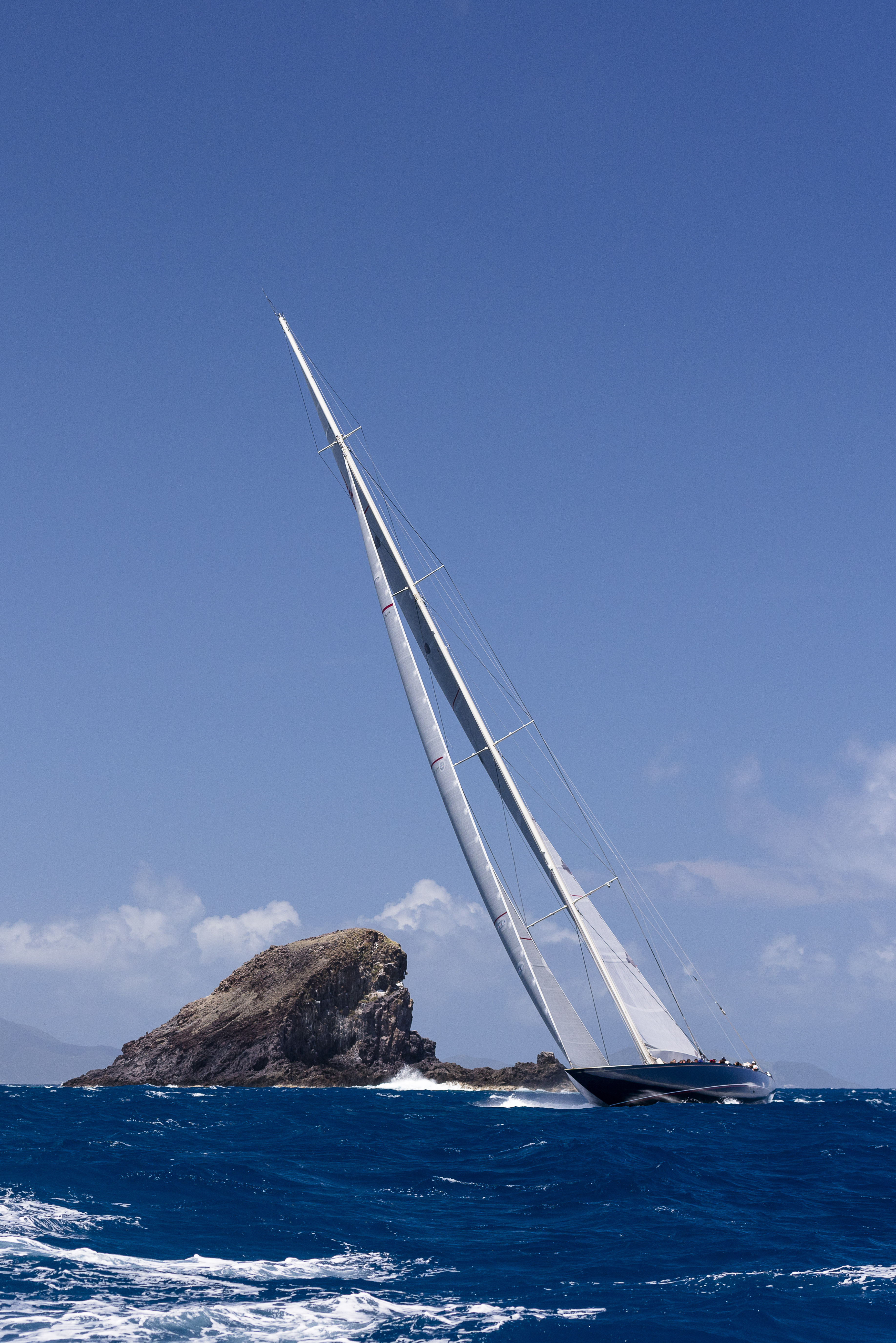
“In terms of handling her, what really strikes you is the balance,” he continues. “Notably when setting the larger race headsails off the wind, as you come up onto it and experience the aerodynamic and hydrodynamic forces balance out – you feel all that through the helm, and when you hit the sweet spot, you can helm with two fingers while watching the tell-tales on the genoa. She has all that power but she’s light and perfectly balanced and you have fingertip control – although it’s a different story in strong winds and sea state!”
In light winds or tight situations, however, she’s more challenging. “The wheel is 3.5 turns lock to lock so that makes it difficult to manoeuvre as you have to spin vigorously to turn, and fitting into a small space in a race situation is demanding and needs concise communication between tactician, helm and sail trimmers, especially when starting,” Henshaw-Depledge explains. “In light airs you have to be careful not to use too much helm as it creates drag. You steer with the sails as the rudder is effectively just a big trim tab at the aft end of the keel. You can’t put the helm down without easing the main, especially in strong airs.”
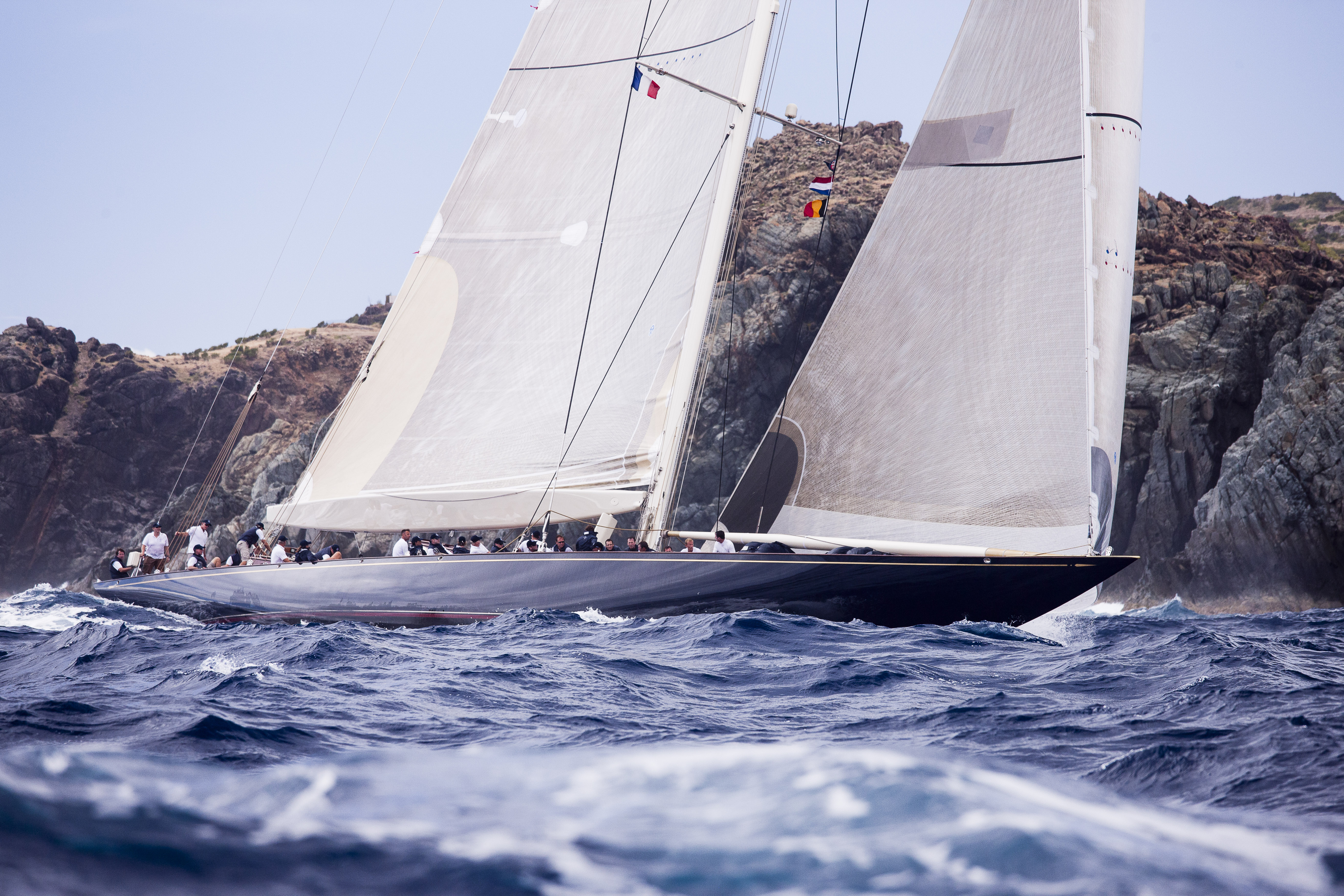
Henshaw-Depledge has also made innumerable Transatlantic crossings aboard Velsheda and, although the J’s were never designed for offshore trips, he believes she behaves very well with a smaller rig and cruising sails. “On an ocean crossing, we have to sail due to limited fuel capacity. I love sailing with the first reef in the main, yankee and staysail – on a broad reach that rig balances out well and you can easily sit on 13 knots, more if surfing waves. When it gets too rough, we opt for the trysail and eventually storm jib; it is much safer to stow the boom in its crutch on centreline, lashed down. Once boom is stowed and using the trysail we have a fairly bomb-proof rig; I’ve been hove to in 45kn
with that.”
Fundamentally, she’s seaworthy according to Henshaw-Depledge – “although a bit like a submarine; often we scoop a deck load of water” – and he should know, he’s also filled the cockpit a few times. “Down below she feels very comfortable on passage – it could be blowing 30kn on deck and you really wouldn’t know.” In terms of speed, Henshaw-Depledge says that 10-11kn is perfectly standard upwind; he has seen 16kn, racing in strong conditions with symmetrical spinnaker, and has also hit 17.3kn in surfing conditions offshore. “That was a learning exercise,” he reflects wryly, “to be avoided!”
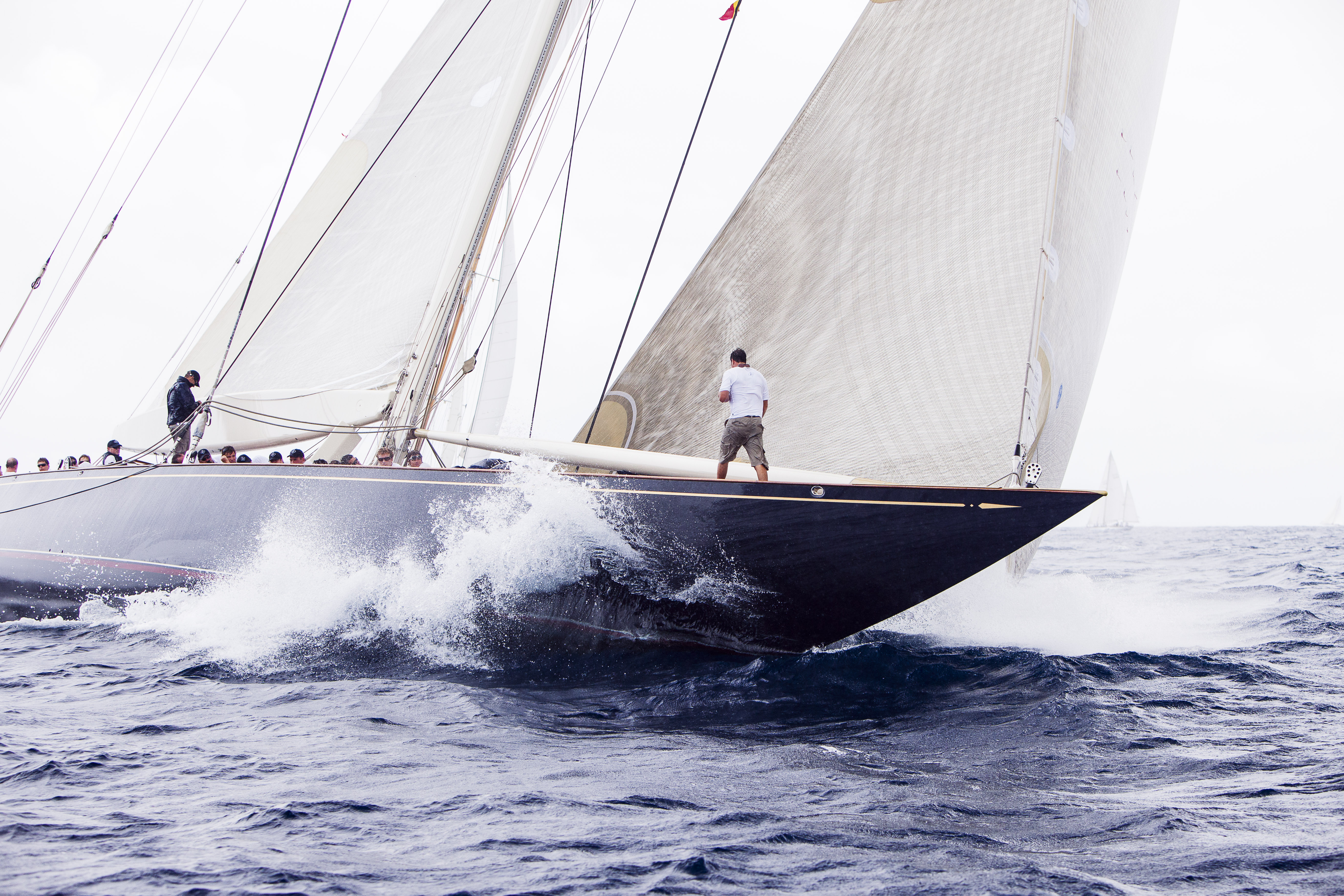
It’s clear that Henshaw-Depledge, like so many before him, is under the spell of this yacht. “I love being back on board the old girl,” he reflects. “The first thing you notice is the smell of the boat, an alluring antique smell – it gets into you – new yachts don’t have that.”
So Velsheda sails into the future, an important link to our past. She remains a fixture of the J Class; competing in regattas in Europe, the Caribbean and America, and never failing to illuminate any event with her bewitching combination of power and grace.
Fine Art Prints
drewdoggett.com | michaelkahn.com




